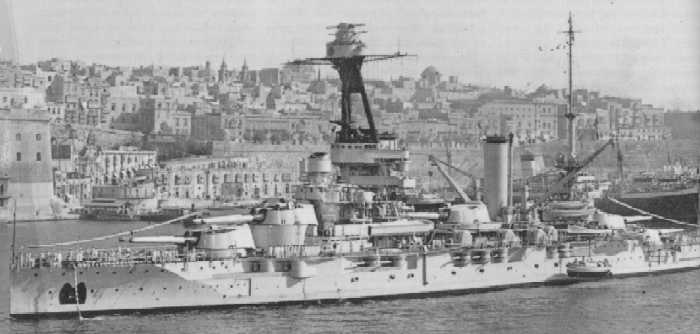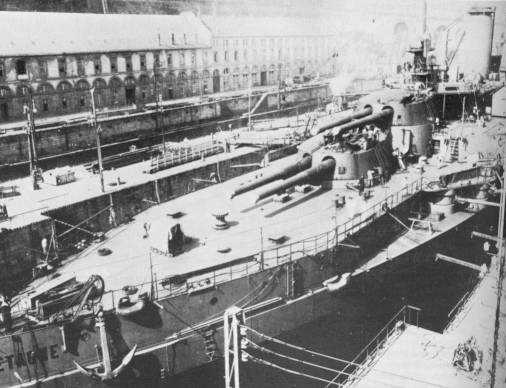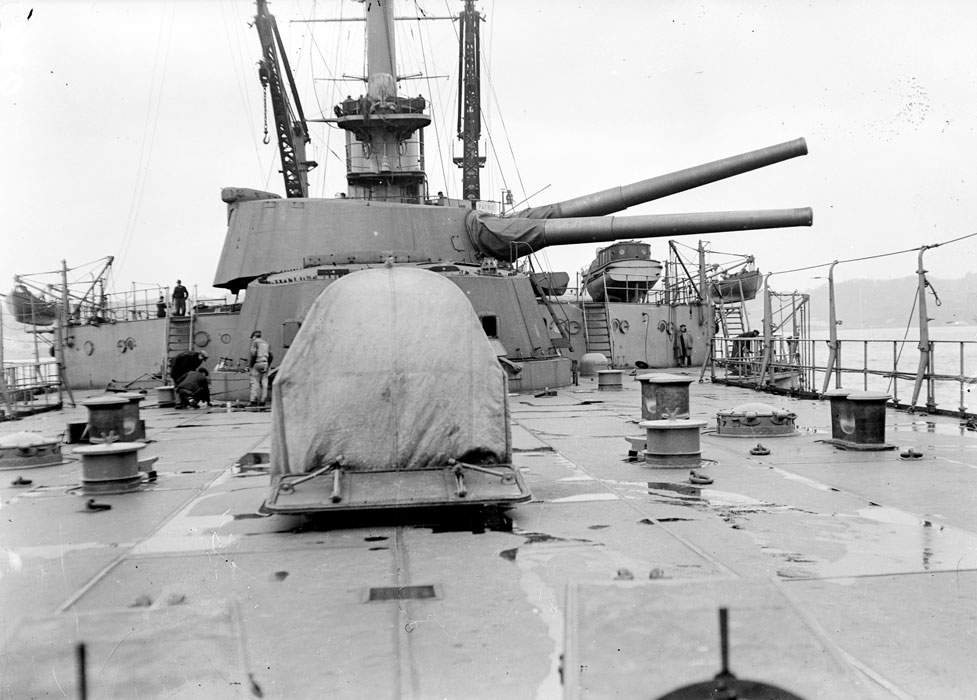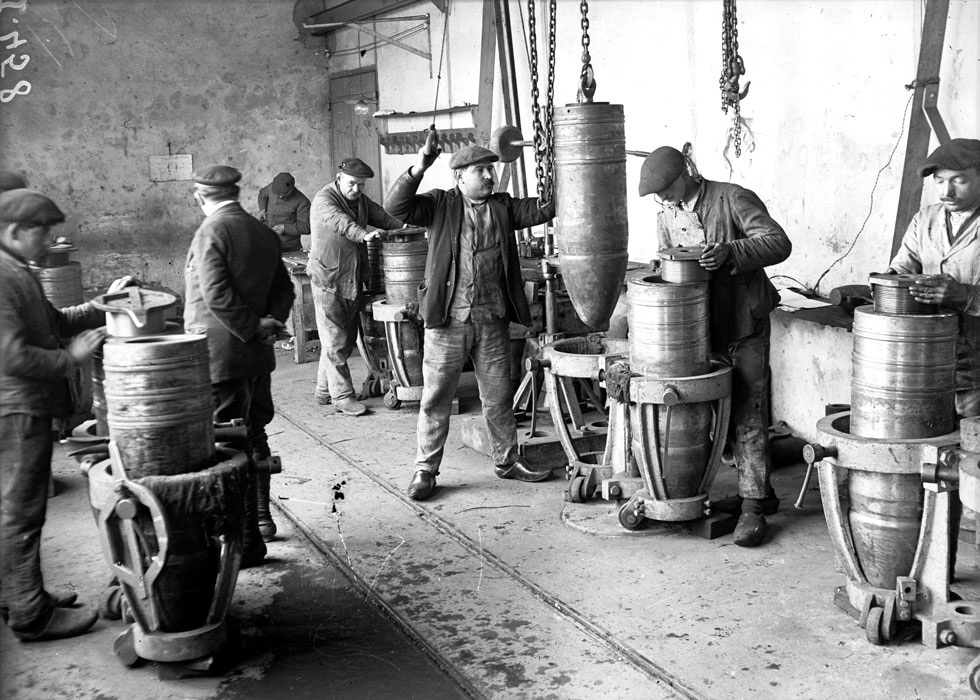|
These guns were considered to be an excellent weapon by the French, but the ships they were installed on were handicapped by poor fire control and low maximum turret elevations and hence short range. Salvo dispersions at their maximum range of 15,860 yards (14,500 m) was 330 feet (100 m). Some of the unused guns intended for the never built Normandie class were used to rearm the Bretagne class when they were reconstructed in the 1930s. Other spare guns were later used as coast artillery, with four guns in two twin turrets mounted at Cap Cepet near Toulon. Four additional guns were used with a French version of the German BSG mounting and installed at Plouharnel near Quiberon. Additional spare guns were used on railway mountings. After Provence was scuttled at Toulon in November 1942, the Germans removed her two after turrets and then used them as coastal artillery in Southern France. These emplacements saw action in August 1944 during the Allied invasion where they were fired upon by the French battleship Lorraine and by USS Nevada (BB-36). In May 1943 the French proposed to the USA that the incomplete Jean Bart be finished in a US yard as a combination anti-aircraft / carrier platform. Jean Bart had already given up her four 380 mm (14.96") guns to re-arm sister-ship Richelieu, so this proposal saw refitting her single main turret with four 340 mm (13.4") guns taken from the old battleship Lorraine together with cradles from the Métline coastal defense battery in Tunisia. All smaller caliber guns were to be removed and replaced with fifteen twin 5"/38 (12.7 cm) mountings and sixteen 40 mm Bofors quad mountings. Six aircraft of either US Avenger or British Barracuda torpedo bomber types along with US Hellcat or British Seafire fighters were to be carried. A second proposed reconstruction saw removal of all aircraft facilities and the secondary battery increased to seventeen twin 5"/38 (12.7 cm) mountings along with twenty 40 mm quads. This latter design also entailed using eight Mark 37 GFCS and twenty Mark 51 fire control systems. The USN decided that their resources would be much better spent turning out new ships - the guns and directors were the equivalent of about six Gearing class destroyers - rather than to use them to rearm an obsolescent foreign warship and so Jean Bart then languished until her postwar rebuild in France. Gun construction was generally similar to that of the 380 mm (14.96") guns used on the later Richelieu class battleships, but there was an additional C tube and no loose liner. The Welin breech block is believed to have opened horizontally. Actual bore length was 45.82 calibers. |

NMN Provence
|

NMN Bretagne about 1918 |

Stern turrets on Lorraine
|

Adding burster charge to 340 mm APC shells
at Usine pyrotechnique Saint-Nicolas about 1916
|